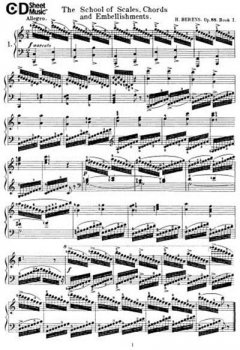The school of scales, chords and embellishments Twenty-eight studies arranged for the piano by Hermann Berens

English | 1939 | ASIN: B00088FI1U | 30 pages | PDF | 4 MB
Schirmer's library of musical classics
you can now donate with bitcoin or your bank card by clicking the piggy icon under the logo
